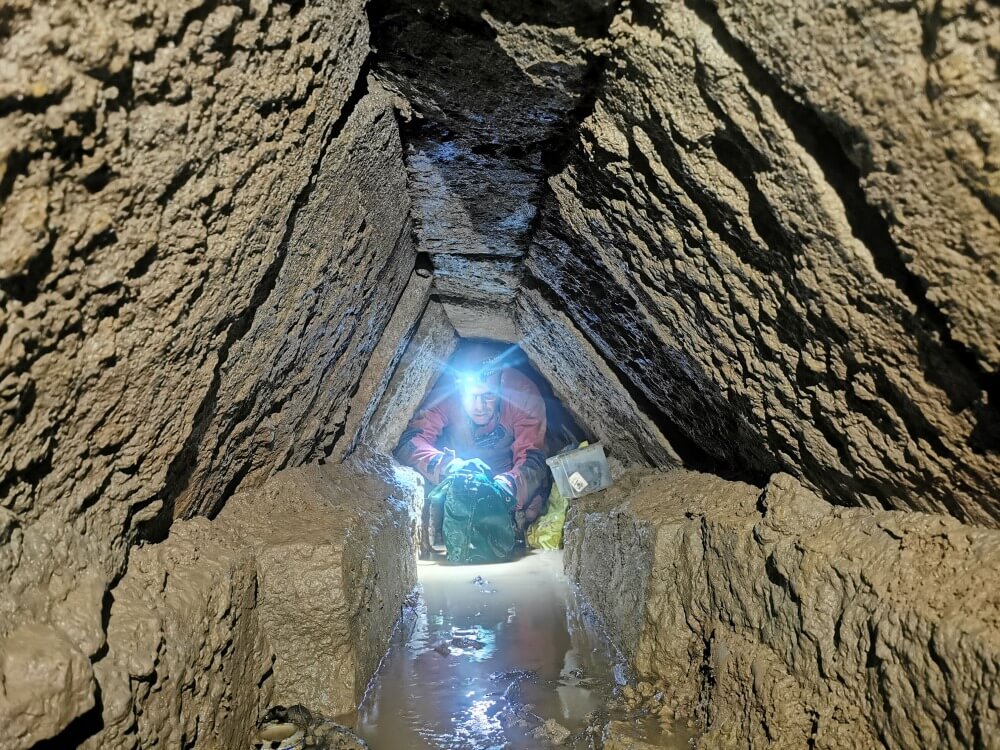New discoveries in the ancient aqueducts that led to Jerusalem: the most complex documentation project done so far in Israel has discovered advanced and unique methods for exploiting underground groundwater, which made it possible to supply water to Jerusalem during the Second Temple period. "This is a one-of-a-kind testimony to Bunya's developed technological knowledge"

A new study, QHeld with the support of the Susan and Roger Hartog Center at the Institute of Archeology of the Hebrew University and with the assistance of volunteers from the Cave Explorers Club, and was recently published in the international journal Geoarchaeology He uncovered long sections of an ancient shaft tunnel that carried water from Ein Hiyar to Jerusalem from the Second Temple period. The researchers documented for the first time a section of about 500 meters of the tunnel, which is made of fine gasite construction that has no equivalent in Israel and parallels from the Roman world have not yet been found. The research was conducted as part of the doctoral thesis of Azriel Yehezkel from the Institute of Archaeology, together with Yoav Negev from the Cave Seekers Club, Amos Fromkin from the Institute of Earth Sciences and the Center for Cave Research, and Uzi Liebner head of the Institute of Archeology.
The Hiyar Aqueduct, which carried water from Ein Hiyar to Jerusalem through Solomon's Pools, is the shortest and most sophisticated of the aqueducts that carried water to the city in ancient times. It is about five kilometers long and includes a spring, a three-kilometer underground tunnel that drains groundwater, a dam, an upper aqueduct and another tunnel crossing a ridge line. The dozens of shafts going down into the tunnel were originally used for its excavation and maintenance. In the present study, a first in-depth survey was conducted in the underground part of the shaft tunnel during which it was mapped with the help of advanced equipment over 1,200 meters. For the first time in history, long sections previously unknown were discovered and recorded. "The research we conducted is actually the largest and most complex underground documentation project done so far in an ancient water system in Israel. Even today, about two thousand years since its establishment, its underground part carries water and is a unique testimony of its kind to the developed technological knowledge of its builders", Ezekiel explains. "During the work, we slid down ropes into the shafts at a depth of about 18 meters and crawled through frozen water and swampy mud. At some points the water level almost reached the ceiling", Negev sharer.

The research findings reveal the built part of the shaft tunnel, which is made of fine gas construction, using sophisticated water engineering and unique architecture. As mentioned, parallels from the ancient Roman world have not yet been found. The researchers found that the total length of the constructed section is over 500 meters and it is divided into four sections - where each section has a unique architecture related to engineering and the load that the aqueduct was supposed to withstand. Ezekiel explains, for example, that "In the first part, and 250 meters long, due to fear of collapse of weak and unstable bedrock, a wide and high underground tunnel was first cut. After that, a kind of 'sleeve' of its mother was built inside the tunnel made of massive gas stones that were brought down through the shafts. This technology, of building a stone 'sleeve' in sections of a tunnel that is prone to collapse, corresponds to the recommendation written by the famous Roman architect Vitruvius in his book over two thousand years ago."
The researchers emphasize that after 150 years of research during which many proposals were made to date the system, for the first time it was dated in the current study using scientific analytical tools. "We took eight samples of plaster containing coal from the shafts going down into the tunnel and determined their time using a scientific method for dating organic matter", the researchers explain, "The samples show that Amat Hiyar was established around the first century AD, at the end of the Second Temple period." Apparently it was established by order of the well-known Roman commissioner of Judea - Pontius Pilate - who sentenced the Christian Jesus. A source from the period states that he built an aqueduct to Jerusalem, and the suggestion is consistent with the analytical dating. The findings also show that the forecourt was restored and renovated during the second century AD during the time of the Roman city of Ilia Capitolina, which was established on the ruins of Jerusalem around 130 AD. In future studies, the researchers intend to continue to investigate the remaining parts of the Amet Hayar, as well as to try and for the first time analyze in an analytical way additional aqueducts that were used in the water supply system for the city of Jerusalem.
More of the topic in Hayadan:
- Everything is a question of control/Dr. Yachiam Sorek
- Findings at Tel Motza near Jerusalem testify to a temple from the time of the First Temple that is very similar to Solomon's temple described in the Bible
- Scientific dating has confirmed: the Shiloh female was carved by King Hezekiah * the first accurate evidence
- The place from which the Romans besieged Jerusalem at the end of the Second Temple was discovered
- Unusual concentrations of silver in pottery in Jerusalem from the end of the Second Temple period
